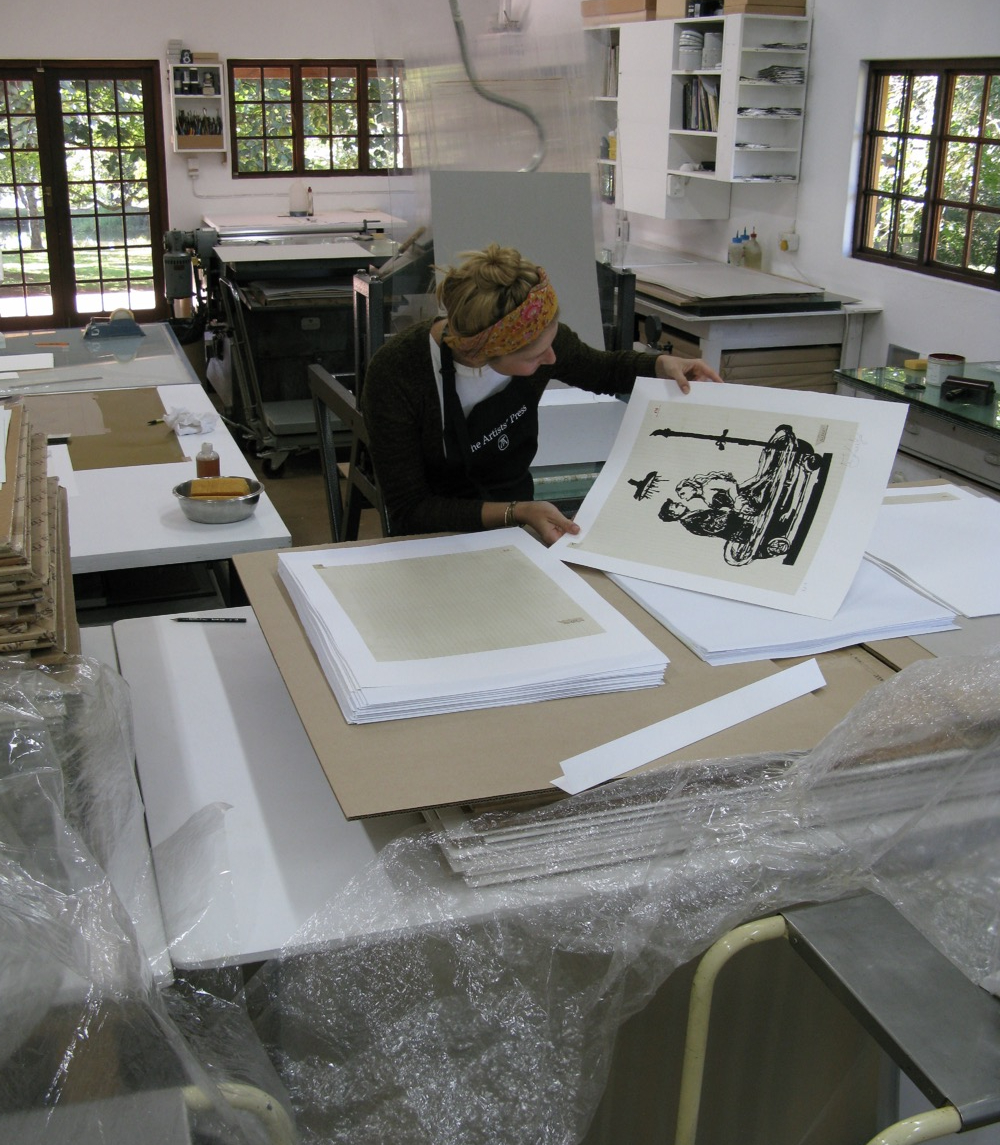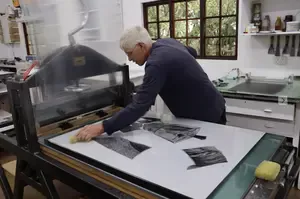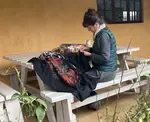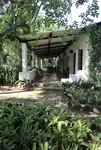Taking Care of Your Print Collection

Taking good care of your print collection involves a number of steps.
Bright daylight and even bright artificial light can cause colours to fade and papers to discolour and become brittle. Too much light is harmful even when ultra-violet rays are filtered out; so make sure your print is exposed to moderate light for limited hours at a time. Think too, of rotating your prints from time to time to give them a rest. Strong light has serious effects on prints with ultraviolet light causing colours to fade and change. Do not place prints on walls that receive direct outside light for any length of time. Using UF3 plexiglass instead of normal glass will reduce light damage.
Humidity can also effect prints. If the humidity is too high, prints may be damaged by mould, which causes small dark spots (also referred to as foxing). If the humidity is too low the paper may become brittle. If the environment swings between the two extremes you may find that the print buckles. As with all works of art dust and pollution are also harmful. As a general guide to caring for your prints keep them in a clean and well-ventilated area.
When handling unframed prints, make sure you work with gloves or very clean dry hands. Finger smudges, dirt, or dents and tears caused by carelessness will affect the value of your print. If you must handle your print, lift it gently by holding diagonally opposite corners to avoid creasing.
Framing
These framing tips are to help you protect your artwork on paper. Ask for references for a reputable framer from knowledgeable friends, print dealers, or museums. Since improper framing can permanently damage your print, it's important that you find a professional framer who uses archival materials. Prints should only be mounted on a pH neutral backing board and should never be stuck to the backing board with anything other than archival tape or hinges. Preferably this tape should be removable without causing the back of the print to tear. Prints are never glued or taped directly to a backing with double-sided tape; hinges made of linen or fine Japanese paper hold the print to the backing with non-acidic, non-staining, reversible adhesives.
By using archival materials the framer is assuring you that everything that comes in contact with the print is pH neutral, or acid-free. This means that nothing in the framing materials will alter or destroy the paper or inks of the print.
Non-acid-free materials harm prints in the following way. Matboard which is not chemically inert and free of acid transfers its acidity to the paper, which over time causes it to turn brown (known as mat burn), become brittle, and even to disintegrate when removed from the mat. Museums recommend that mats be made from 100 percent cotton rag mat board, at least two-ply in thickness. A less expensive alternative is "conservamat", or conservation board, which is made from highly purified pH neutral wood pulp. Some fabrics like linen, cotton, and silk are also safe to use.
It is not necessary to use a window mount in your framing. A window mount is a matter of personal taste. Often a print with a large border is simply hinged to a backing - this is called "floating" the print - and requires a spacer, hidden by the edges of the frame, to keep the print from touching the glass in the same way that a window mount does. A window mount may cover the edges of the paper if you prefer (although the edges are considered to be an integral part of the print) or the print may float within the window.
Never allow your print to touch the glass or perspex of the frame. Both glass and acrylic sheeting (perspex) condense moisture from the air, and if your print touches either, it may actually stick to the surface and be ruined. Both materials will protect your print and filter some of the harmful rays of light. Glass is cheaper, but it breaks easily. Ultraviolet filtering glass and perspex are available at a higher cost. Since glass is heavier than plastic, it may be impractical for very large prints. Always use clear glass and not the non-reflective type. Perspex although lighter, is more expensive than ordinary glass, scratches easily, and carries an electrostatic charge which causes it to attract dust. With time, perspex also tends to sag in the center, possibly touching your print.
Transporting Prints
Transporting prints is something that can be done safely if the proper care is taken. If a print can be transported flat, it is best to place it between two sheets of acid-free tissue paper, sandwiched between two sheets of stiff corrugated cardboard cut larger in size than the print to be packed. If prints need to be packed in a tube for mailing or airline flights, use a large diameter tube so that the print won't be rolled too tightly. Sandwich the print between two sheets of thick card, which are bigger than the print, and roll them up together. Tape this roll closed to prevent it from springing open in the tube. Detailed packing instructions are available here:
Packing Prints Flat
Packing Prints in a Tube
Storing Prints
Storing prints is an important part of taking care of them. Prints should be stored flat, either in or out of mounts, layered between sheets of non-acidic interleaving tissue. Never put your prints on surfaces like corrugated cardboard or wood; not only are these materials acidic, they also have textures that can imprint themselves on your artwork over time. Loose prints should not be stored rolled up. Prints that have been mailed in tubes should be flattened as soon as possible.
Needless to say, your storage area should be clean, dry and protected from insects and vermin. Cockroaches, fishmoths and mice are common despoilers of paper. Simple, relatively inexpensive non-acidic boxes will protect your prints from environmental damage; they are available from art and preservation suppliers.
Print Studio


